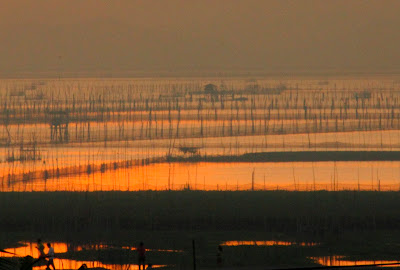Its the Holy Week once again, a time when most Filipinos would take this opportunity to rekindle their catholic faith by immersing themselves in the celebration of the true meaning of lent. Lent, we Filipinos have our ways and traditions that brings this season to life.
Looking for the best way to spend this lenten season? try going around the Lake!
Ahh…the Lake.
 |
But what could be the best time to go around the lake? Three years ago, we decided to make this trip, packed our car and armed with a map, we began our sojourn through the towns sitting around the lake during the most culturally loaded but solemn occasion of our catholic nation….the Holy Week. Since then, going around the lake on Semana Santa also became a yearly tradition for me. This Holy Week, come travel with me as we experience the best of Filipino traditions and culture around the lake….. Watch out for my following posts: Part 2: Palm Sunday in Antipolo Part 3: A Gathering of Saints in Binangonan Part 4: Calvary Hill in Binangonan Part 5: Atypical Church of Morong Part 6: The Quaint Old Church of Baras Part 7: The Heritage Church of Tanay Part 8: Pililla at the Edge of Rizal Part 9: Crossing the Border, from Rizal to Laguna Part 10: Our Lady of Turumba Church in Pakil Part 11: On a Good Friday at Pakil Part 12: Paete, the Old Stone Church and its Carvers Part 13: The ‘Prusisyon’ in Paete Part 14: Church at Pinagsangahan, Pagsanjan Part 15: Historical Church of Magdalena Part 16: So High at Majayjay Part 17: Besides its Shoes, Stand the Magnificent Church of Liliw Part 18: The Old Heritage Houses of Pila Part 19: The Church of Old Pila Part 20: Going Home Laguna de Bay, is the largest lake in the Philippines and the third largest freshwater lake in Southeast Asia. “Laguna de Bay” is an old Spanish term for Lake of Bay, Laguna which is Spanish for lake and Bay, one of the earliest towns in Laguna (wiki). It was Captain Juan de Salcedo who ‘discovered’ Laguna Lake when he sailed on the lake through the Pasig River to discover populated communities on its shores in August 19, 1571. Captain Salcedo is the grandson of Miguel Lopez de Legazpi, the Philippines’ first Spanish designated governor. Since Salcedo chose to land in Bay, (could have been “Baybay” meaning lakeside) he named the lake “Laguna de Bay,” where the province got its name “La Provincia de la Laguna De Bay”. But even before tha Spaniards came, Laguna de Bay and Pasig River were the natives’ expressway to Maynilad, now Manila. The river and the lake was also the trading route of Chinese, Thai, and Vietnamese merchants bartering their potteries and other goods with local products in the 14th and 15th Century (www.laguna.gov.ph). |
It’s a shame that the lake has continued to suffer pollution particularly around the metropolitan side, though government and non-government entities had worked hard to keep further pollution at bay, no pun intended. Thanks to its great size, lake pollution has not spread throughout making it relatively manageable to keep the lake still fit for freshwater fishes to live. The lake is a primary source of freshwater fish in the country. The lake is actually shaped like an italicized ‘W’ with two peninsulas jutting out from the north. Between the peninsulas, the middle lobe fills a large volcanic basin. It is believed that the lake was formed by two major volcanic eruptions more than a million year ago (wiki).
Rizal-Laguna Loop Part 2: Palm Sunday in Antipolo








No comments:
Post a Comment